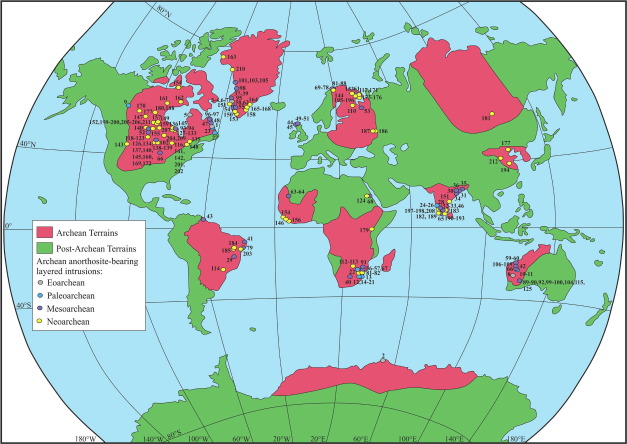Early terrestrial and lunar anorthosites: Comparative geochemistry and evolutionary processes
Paul Sotirioua b, Ali Polata,
aSchool of the Environment, University of Windsor, Windsor, ON N9B 3P4, Canada
bGeoZentrum Nordbayern, Friedrich-Alexander-Universität, Erlangen 91054, Bayern, Germany
cCenter for Global Tectonics, State Key Laboratory for Geological Processes and Mineral Resources, China University of Geosciences, Wuhan, Hubei Province, PR China
dSchool of Geography, Geology and the Environment, University of Leicester, Leicester LE1 7RH, UK
In a paper in 1970, Brian Windley first recognised that early terrestrial and lunar anorthosites both have calcic plagioclase, and low TiO2 and high CaO and Al2O3 contents. Despite these similarities, the geochemistry of early terrestrial and lunar anorthosites has not been rigorously compared and contrasted. To this end, we compiled 425 analyses from 212 early terrestrial anorthosite occurrences and 306 analyses from 16 lunar anorthosite occurrences. This was supplemented by a compilation of plagioclase anorthite (An) contents and pyroxene Mg# from early terrestrial and lunar anorthosites. Early terrestrial anorthosites have lower whole-rock An contents but similar Mg# to lunar anorthosites. The CaO contents of lunar anorthosites are higher than those of early terrestrial anorthosites for a given MgO and Al2O3 content, early terrestrial anorthosites have higher SiO2 contents than lunar anorthosites at a given MgO content, and lunar anorthosites have higher Eu/Eu* anomaly ratios yet broadly similar La/Yb and Nd/Sm ratios than early terrestrial anorthosites. Some early terrestrial anorthosites have less fractionated chondrite normalised rare earth element (REE) patterns and less prominent positive Eu anomalies than lunar anorthosites. Lunar anorthosites have higher plagioclase An contents, yet a similar range of pyroxene Mg# compared to their early terrestrial counterparts. Some early terrestrial anorthosites are more fractionated than some lunar anorthosites. Our interpretations imply that most early terrestrial anorthosites crystallised from basaltic parental magmas that were generated by high-degree partial melting of sub-arc asthenosphere mantle wedge sources that were hydrated by slab-derived fluids, with the remainder being associated with mid-ocean and mantle plume settings. Some of the arc-related early terrestrial anorthosites were influenced by crustal contamination. In addition, early terrestrial anorthosites originated from partial melting of the mantle at various depths with variable garnet residua, whereas lunar anorthosites formed without any significant garnet residua. Lower plagioclase CaO contents and pyroxene Mg# in early terrestrial anorthosites can be explained by higher proportions of clinopyroxene and olivine fractionation in terrestrial magma chambers than in the lunar magma ocean where orthopyroxene and olivine fractionation occurred. Low TiO2 contents in both terrestrial and lunar anorthosites reflect rutile and/or ilmenite fractionation.
Original source: Sotiriou, P., Polat, A., Kusky, T.M., Windley, B.F., 2024, Early terrestrial and lunar anorthosites: Comparative geochemistry and evolutionary processes, Geoscience Frontiers, https://doi.org/10.1016/j.gsf.2024.101914

Figure 1. World map showing the distribution and age of Archean anorthosite-bearing layered intrusions (modified after Zhou et al., 2016, Sotiriou and Polat, 2020, Sotiriou et al., 2020).